We need to have a conversation. It might not always be a comfortable one, but I think it’s important.
Before each class I teach I send out a student letter that includes the following:
If you use someone else’s photo or artwork as a design source then you should get permission from that photographer or artist. This is always a good idea, but I consider it necessary if you plan to exhibit your work or even post it to the internet. For example, I don’t post photos of student work based on copyrighted material without permission from the copyright holder. I’ve found that most photographers or artists give their permission when they see how it’s planning on being used. Especially when you add that you’ll include their name and contact info in any showings or postings.
The concept of copyright and obtaining permission to use someone else’s work as a basis for a quilt ought to be familiar to any quilter who has entered a quilt show. Even in traditional shows, entry forms will ask what pattern the quilt is based on and who designed the pattern. Giving credit where it is due is not only the legal thing to do, it’s the nice thing.
For many of my students, copyright of their source material isn’t an issue because most often they own it. Usually they, a relative, or a friend took the photo or created the image on which they’re basing their quilt. Pictures of grandchildren, favorite pets, animals seen on vacation, childhood photos—these are fine to use, of course. Having a personal connection to the image is also helpful as it provides inspiration and motivation to complete the work.
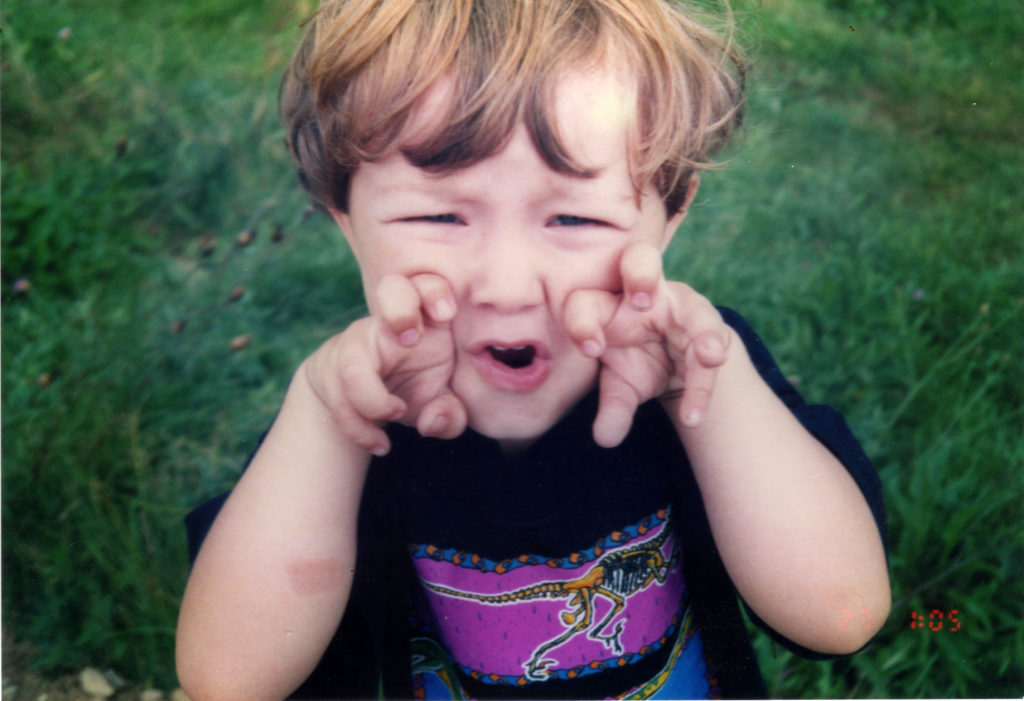

Potential trouble arises, typically, when students find an image online that they are attracted to. Maybe they have a favorite animal or person. Typing the animal’s or person’s name into Google will give them hundreds of thousands of images within a few milliseconds.
I think it’s this overwhelming flood of images found on the internet that makes it easy to overlook the fact that these images belong to somebody. Photos and other images don’t appear on their own, materializing out of the ether. Someone may have spent years learning their craft, days composing the image, hundreds or thousands of dollars on travel and equipment and supplies—you get the idea. To use their work without properly acknowledgment and/or compensation isn’t nice.
Rule of Thumb
I am not a copyright expert. I don’t claim to understand the deeper complexities of the law. I like to keep it simple.
For an image I really want to use, here’s my rule of thumb: If the image isn’t clearly copyright free, I don’t use it, unless I can find out who made the image, then I’ll ask them if I can use it. If they say no, I don’t use it.
However, when contacting an artist, there’s a good chance they’ll say yes. In my request, I tell them what I plan to do, how I plan to use the finished piece, and ask them how they’d like be credited should they agree. It’s really that simple. I have found that people are apt to act generously if given the opportunity to do so. For example, photographer Joel Davidson provided me with almost a dozen different shots of marabou storks for my quilt “Kaloli Moondance.”
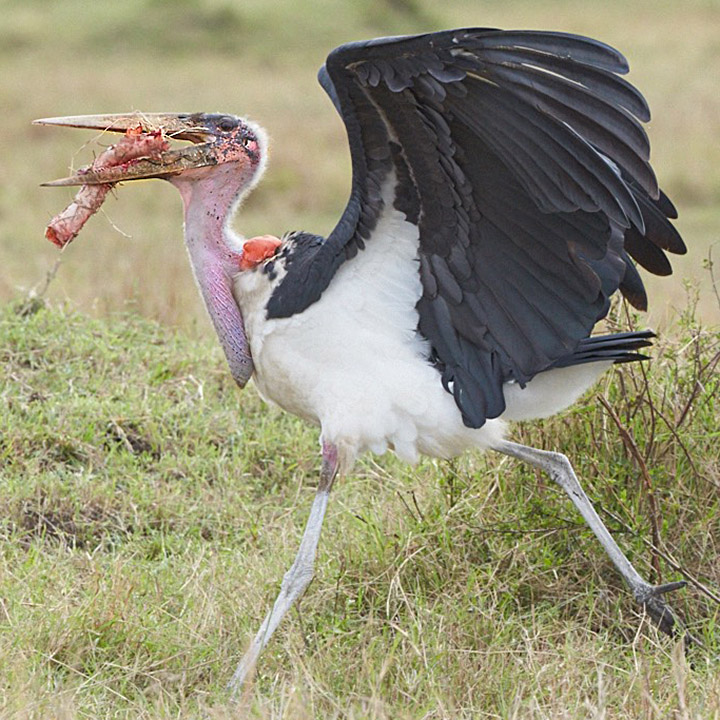
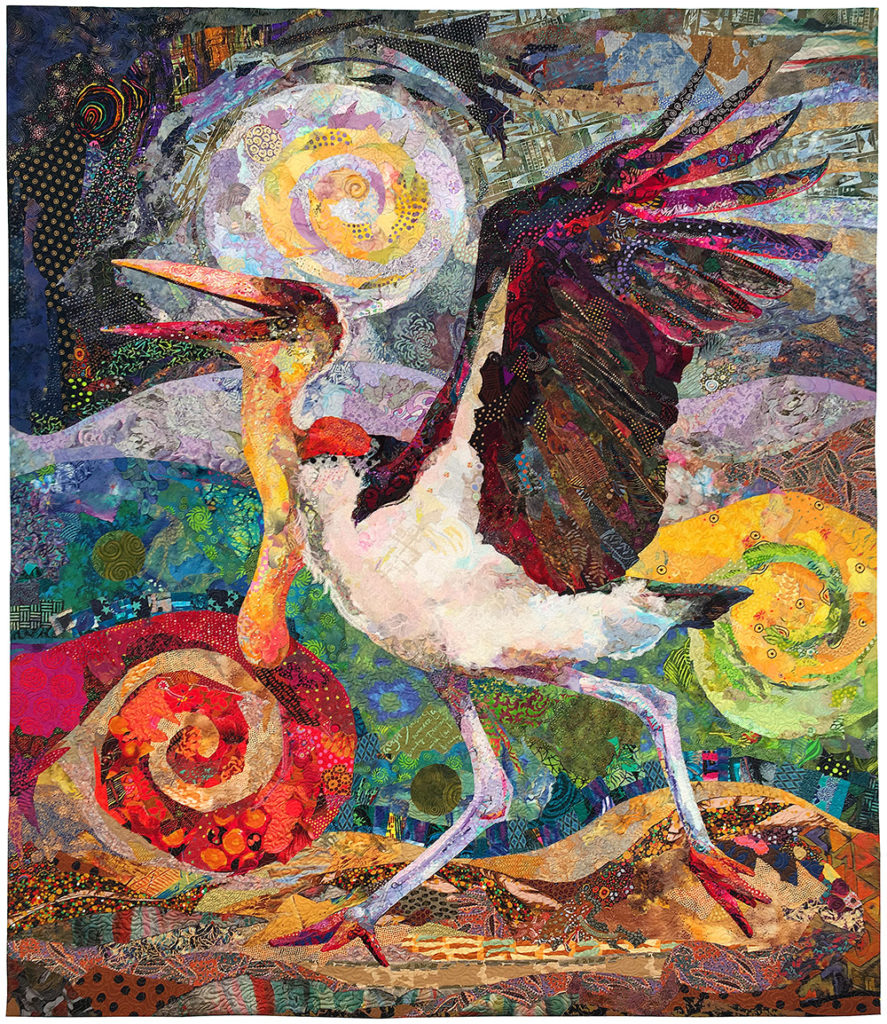
Personal Use
The note I send to my students is not intended to browbeat them, but simply make them aware of the issue. I think when we are tempted to use someone else’s work as source materials for a quilt, it’s easy to say, “Well, it’s only for my personal use. Where’s the harm in that?”
In this day and age, with cell phone cameras everywhere, can you really be sure that a picture of your quilt won’t wind up somewhere it shouldn’t? You know it’s based on someone else’s work, but if it wound up on the internet that attribution would be lost.
For example, it takes me only a few seconds on Google to find quilts—usually fish quilts—based on my patterns or even finished work without attribution. Typically they are just displaying the work they did based on my book or the patterns I sell, but sometimes the work is for sale, either for the profit of the maker or as a fundraiser. The people who post such work must know it was based on my pattern, but without attribution anyone viewing it or anyone who shares it again elsewhere does not know that it’s mine. This is how the internet became the wild west of copyright infringement in the first place. I presume these things are done innocently. I have better things to do than to chase down every improper use of my copyrighted work, but I will do my best to educate my students (and readers).
Fortunately, there are options besides using your own source images or those that are copyrighted.
Taming the Wild West
The internet—used with caution—can be a generous source of material. There are two basic forms:
- Copyright free or royalty free images.
- Stock photo images.
When searching the internet, adding “copyright free image” or “royalty free image” to your search is a good first step, however it doesn’t eliminate all copyrighted materials. You should also know that “copyright free” and “royalty free” are not synonymous. An image that is “copyright free” means there is no copyright on the image and is available for anyone to use. If an image is “royalty free” it may still be copyrighted, but may be available for use for free often with conditions, such as including attribution whenever your image is displayed.
To better explain the differences between these and stock photo images let’s use an example.
Say you want to do an quilt of a lion. You haven’t been on an African safari, so you don’t have images of your own. Instead, you turn to the internet.
You go to google.com in your browser and type “male african lion head” because you want to do a closeup. This is what the first page of about 9,000,000 results looks like.
You may be able to see that some of these images are clearly identified as copyrighted material by either a “watermark” with the website printed over the image or by a banner below the image. But many of them are unattributed. You would have to click on the image and visit the website where that image appears to figure out who, if anyone, owns the copyright. Who knows if the website where you find the image even owns the copyright? Maybe they used it without permission from someone else!
A general Google search isn’t the best way to go about it. Instead I like to use a website that features copyright free and royalty free images. There are many on the internet, but one of my favorites is commons.wikimedia.org. If you’ve heard of wikipedia.com this is a related site.
Let’s use exactly the same search: “male african lion head”.
You receive fewer results, and some that are unrelated (“African slave trade”?), but the cool thing about commons.wikimedia.org is that when you click on the image you get all the info you need about how you can use it. For example, when I click on the first image of the lion yawning, I see that I am free to use the image however I want. It is available in several size images (including a massive 4,896 × 3,264 pixel file). I know that the author of the image is named Yathin S. Krishnappa. And I know that he would like me to give him attribution should I choose to use it.
Here it is:
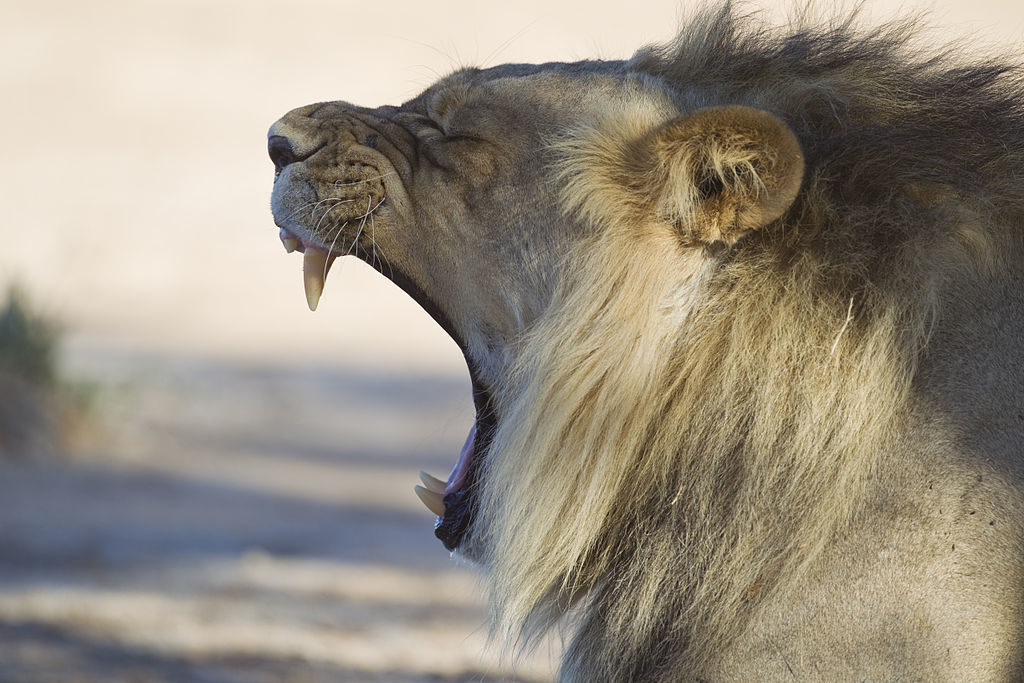
Not all images found here require attribution, but most do.
Other websites, usually associated with for-profit stock photo websites, often offer free use of images without requiring attribution, but they may require you to register by giving them some information such as your email. I don’t want to recommend any particular one over another, but search Google again for “copyright free images” and you’ll find some sites. Here are a couple of images I found that I can use either personally or commercially with no attribution required:
Because there are so many choices, you may be tempted to overlook pay stock photo websites. But if you want high quality and a large selection this may be an option for you, especially since the copyright is cut and dried. For example, shutterstock.com is one of the biggest stock photo companies on the internet. I could get an image from them to use however I want (with a few exceptions) for around $15. Not a huge investment.
Old School and Really Old School
Of course, you don’t have to use the internet. Back in the day, when Hector was a pup and Homer was in diapers, we had these things called books. Before the age of the internet, publishers, such as Dover Publications in particular, were the place to turn for copyright-free clip art to be used in design, advertising, and illustration. These were an invaluable resource for graphic designers and other artists. Dover continues to publish these books and often now includes pre-digitized, ready-to-use images available on CD-ROM.

Images like this lion are often black and white, which is either a drawback (if you want realistic colors) or an advantage (if you want to use non-realistic colors). (See “Tickled Pink” below for an example of a non-realistic color treatment of a black and white original.)
Many of these images are so old the copyright has expired (if they ever had one). Anything published before 1923 in the United States is in the “public domain.” When I was doing lots of smaller fish quilts, I used a book of antique, color fish prints as inspiration. I used them without worry of infringing copyright because of their age.
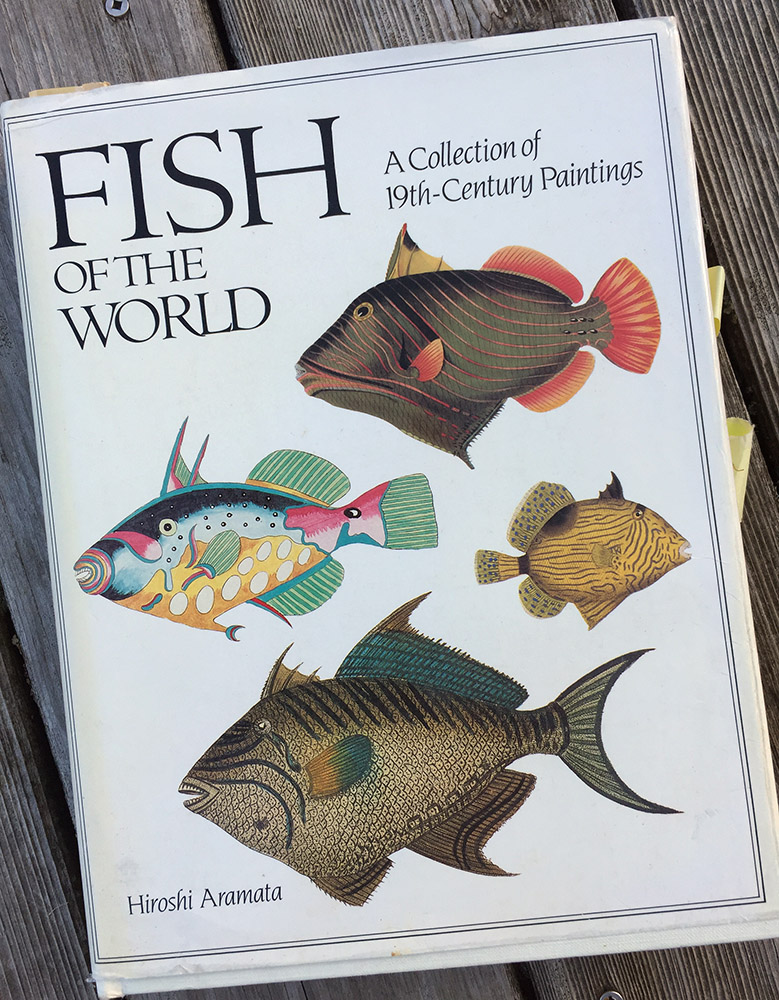
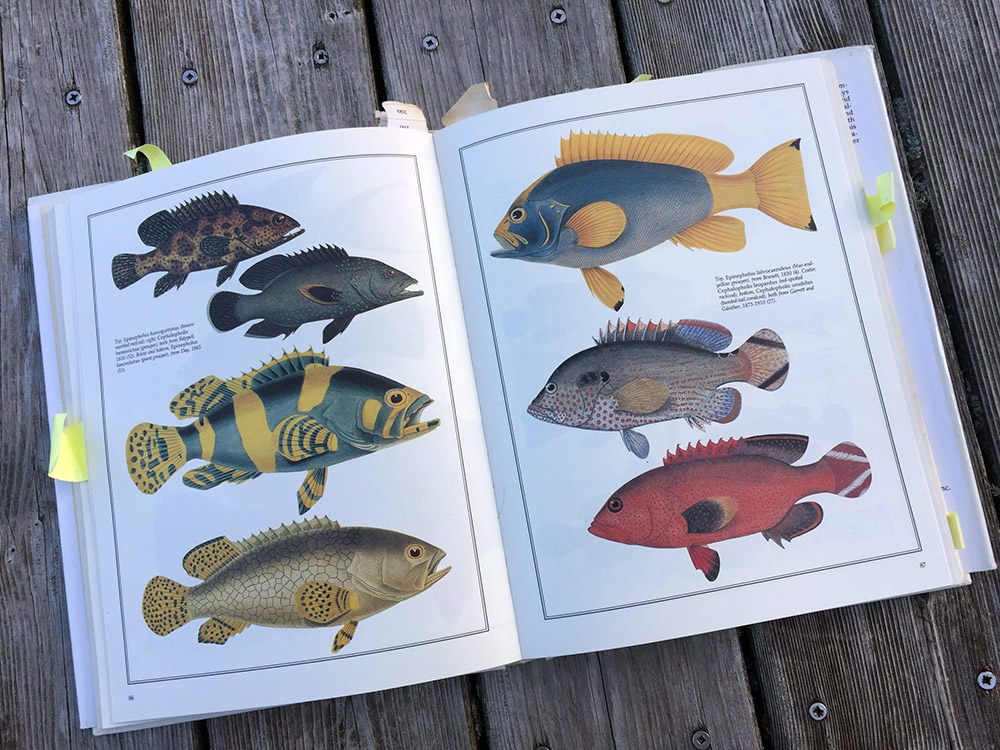

Another time I used a public domain image is in my quilt “Tickled Pink” which is based on German artist Albrecht Dürer’s famous woodcut “Rhinocerus” from the year 1515.

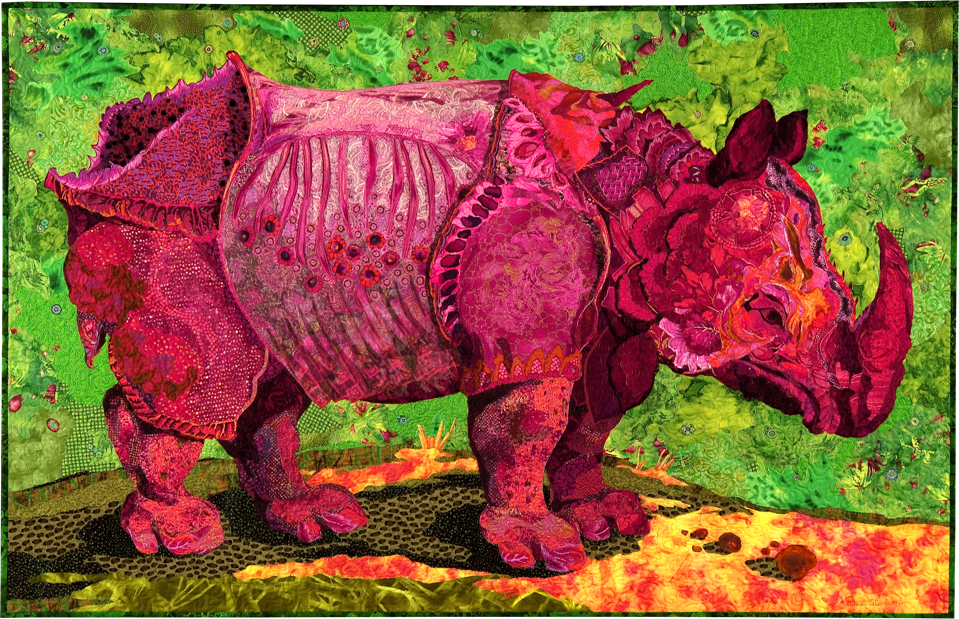
I had long been familiar with Albrecht Durer’s “Rhinocerus,” and I noticed it was included in another Dover clip art book entitled, Gesner’s Curious and Fantastic Beasts. For a few years now, this slim book has been my go-to source for inspiration, leading to designs for at least three or four quilts. In gathering samples for this post, I turned to it again, looking for lion-inspired art this time. Hmmm, this could eliminate the question of, “is it time for another animal, or a portrait?” Why not both?
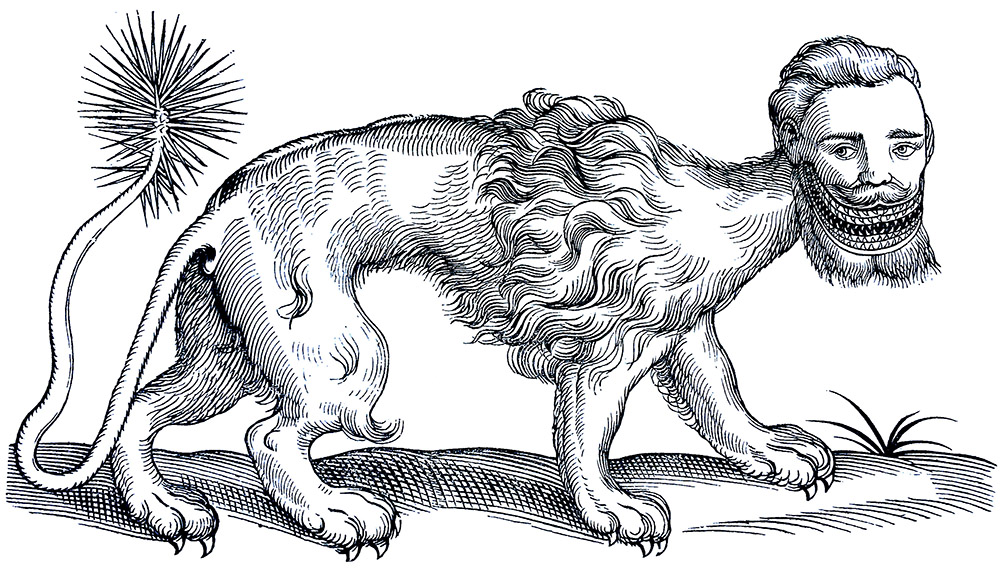
At the risk of being repetitive, I’m no expert on copyright law. You probably aren’t either. But we both know what’s nice and what’s not nice. The trick is, knowing when you might not be acting nice. We have to be aware that something is wrong before we can avoid doing it. So when you’re cruising the internet looking for your next fabric collage source material keep my rule of thumb in mind.
In the words of the immortal Sergeant Phil Esterhaus of “Hill Street Blues”: “Let’s be careful out there.”
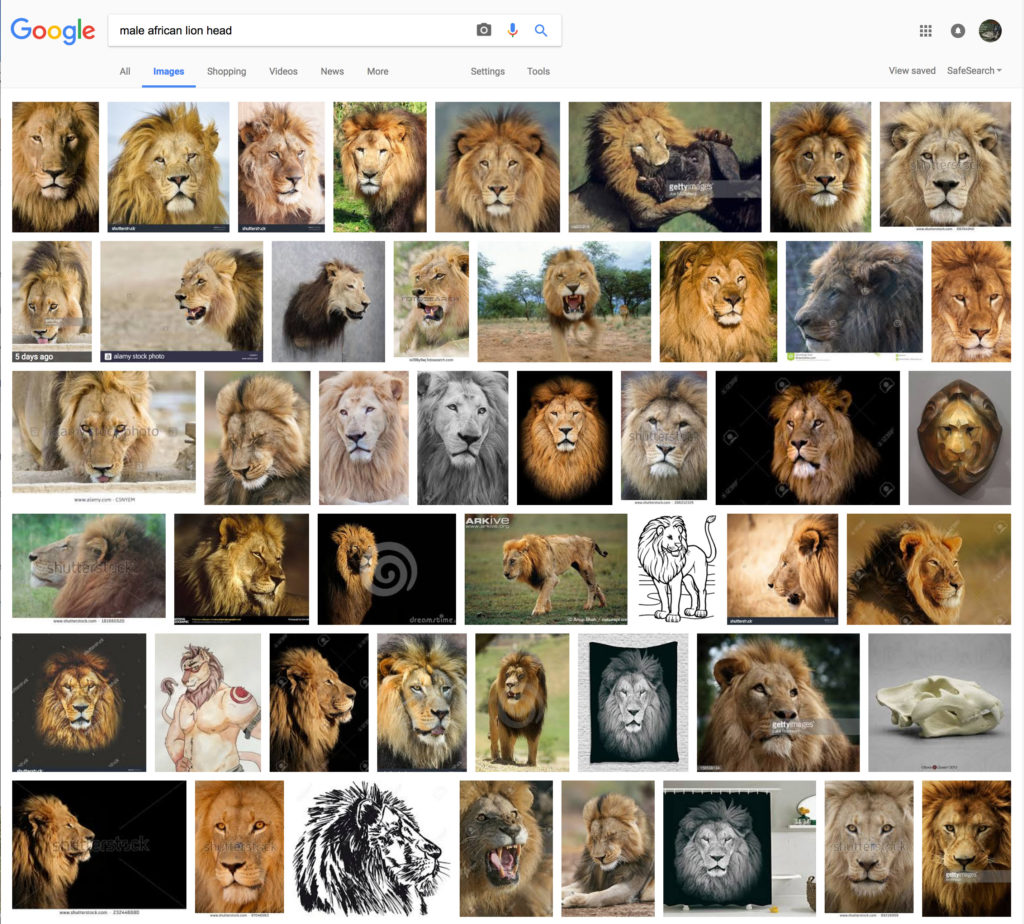
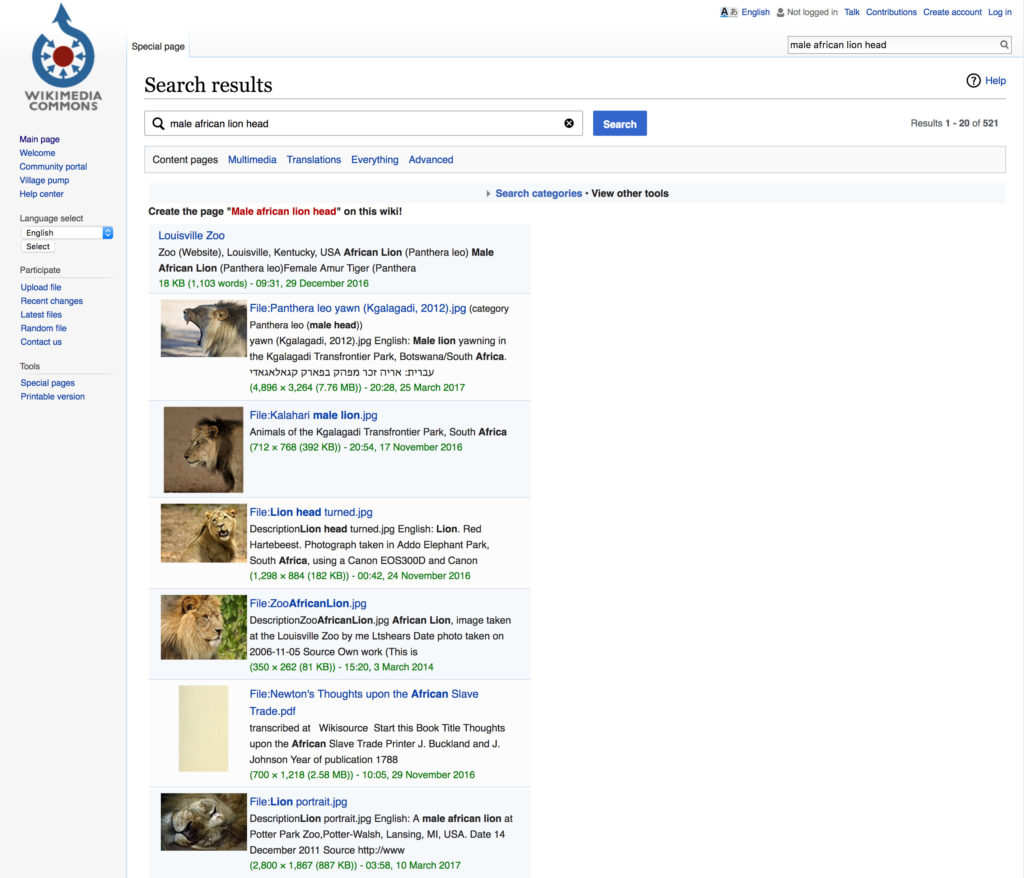

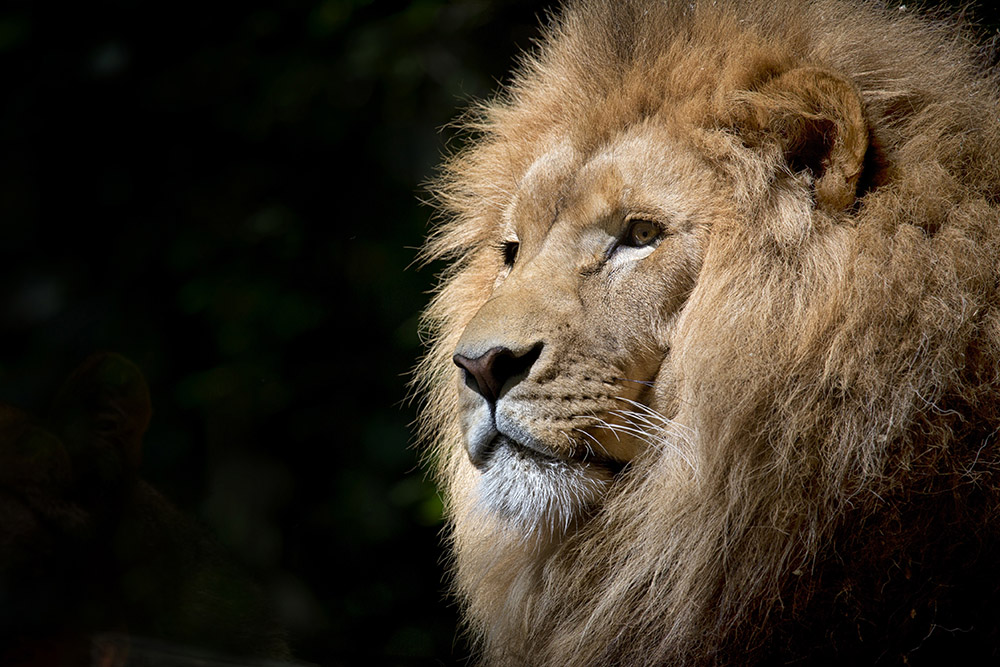
Very informative! Thank you for thoroughly explaining the different types of image uses.
Thank you Susan for going into so much detail! I created a simple fish pattern years ago from a fish rubbing I had done….messy but fun by the way. A year later one of my workshop students entered a piece using my pattern, with no attribution or permission, and won 3rd place in the art category. I am currently the director of an art gallery and have taken several mixed media artists aside to explain copyright infringement of how they have used work by others. Thank you for teaching us both your wonderful art techniques as well as the business end. I’ve been a fan of your work for years, and love your animal series.
Hi Susan,
Such great information and so thoughtfully explained. Thank you! I notice you are on the currently on the road. I visited the Grand Hotel on Mackinac a few years ago. Such a charming place! I was there in August, at the height of the tourist season. The weather was incredibly hot and humid. I suspect the weather is a bit different in early May. Can’t wait to see the photos of your student’s work and maybe even some photos of Mackinac!
Invaluable Information! And some very good references for copy-right free material. Thank you!
If someone were to show a quilt using one if your patterns, how should that be acknowledged correctly? Also, what about showing a piece that is using your collage technique on one of our own personal photographs?
Thanks again for your generosity in sharing insights into your art work!
Thank you, Susan. This very helpful!
your information greatly appreciated, thank you, marg
This is an excellent post. Thank you Susan.
I agree with most of what you said, Susan, but I think you’re wrong on one point. That is, quilts made legitimately from one of your patterns. I say “legitimately” to indicate someone who has purchased one of your books, or taken a class with you. This person paid for the use of the pattern, although she definitely can’t copy it. However, once she makes a quilt with that pattern, you don’t own the copyright to the finished piece. She does. Which means she can sell the quilt, or even images of it, without violating your copyright. She SHOULD credit you as the pattern maker, but even that is not required.
Ellen, I think your comment helps illustrate the complexity of the issue. What you say is likely true in many cases, but here’s the fine print I place on all the patterns I sell: “This design for personal use only. It is not to be reproduced for any purpose such as class handouts or patterns. The resulting Âartwork derived from this design is also for Âpersonal use only, not for works to be sold. If entered in art or quilt shows, a note should be added as to design source.” I can’t say often enough that I am not an expert on copyright law. Perhaps this disclaimer is unenforceable, but I have seen similar restrictions in many places.
You should definitely get credit when someone is using your pattern for anything. It sounds like it should not be offered for sale though.
What about using your technique on a personal photograph when entering in a show? It’s so very distinctive that it seems like you should be given credit then also.
Just wondering.
Merrilee, I’m a little unsure about your question, but I think you mean to ask “Should someone give credit to me, Susan Carlson, when they create a fabric collage quilt based on a personal photograph?” The answer to that is that is no. I have had students mention that they took a class with me or they used my book, for which I’m grateful, but if the image is their own, no credit is necessary. I can’t copyright the technique I teach, which is what it boils down to, I think.
That is what I meant. Thank you for the answer.
Copyright issues are a concern and your post has given all of us a lot to think about.
Thanks again.
Hi Susan,
Thanks for taking my comment in the helpful way I intended it. (I thought later that perhaps I had come across as argumentative.)
Perhaps your fine print alters the answer, although, as you said, I think it’s unenforceable. I have seen patterns, usually for utilitarian objects, saying things like “You can make and sell x items with this pattern. Exceeding this number will require a licensing agreement.” Of course, I don’t know if that’s binding, either.
I sat in on a copyright discussion on the Craft Industry Alliance website several weeks back and this very topic came up. The only way that it is enforceable is if the purchaser knows ahead of time that the pattern that they’re purchasing has that restriction. In other words, if you have on your site a button to buy the pattern but below the button you say “by purchasing this pattern you agree that the resulting work is for personal use only blah blah” then it’s enforceable .
Interesting. That would be easy for me to add to my shopping cart. Thanks!
Timely post. I recently saw on FaceBook a ribboned art quilt depicting the Beatles in silhouette – taken from an album cover. I saw a similar quilt at Houston several years ago. I’d love to make something in a similar vein for a family member who is a Beatle fan – but haven’t felt comfortable using an album image to make it, even for personal use. Wouldn’t you consider these an infringement of copyright? I didn’t see anything about the quilt artists tracking down the original photographers of the Beatles. Thanks!
Karen, It’s possible this would fall under the “fair use” clause of the copyright law. It would depend on a number of things such as date made and other murkier issues such as whether the work extends or changes the original work enough so that it creates a new work. For me it’s simple, as an artist I wouldn’t want anyone to copy my original work (as opposed to the patterns). And I would never, for a couple reasons, want to copy someone else’s work. First of all, there’s the legal issue of copyright, but just as importantly to me, I don’t want to pass off someone else’s work as my own.
thank you. 🙂
This post is very timely for me … I’m currently searching for images to “speak to me” for your class in Nov at Lake Tahoe. I am a HORRIBLE photographer, most of my photos have no emotion or life to them. I understand the importance of getting permission to use other’s work, & have reached out to a couple of artists whose work I admire, but have received no responses. I’m becoming a bit stressed about finding an image & gathering appropriate fabrics in time for your class. I did not include the additional info that I would not sell any quilt made from their artwork, so maybe that will help get permission.
BTW, when I took your book, Serendipity Quilts, to one of our local printers (a large office supply chain) to enlarge the sun & moon patterns, it became the source of conversation between two employees & the store manager. Not because of the beauty of your quilts (one employee was a quilter & said she would go out a purchase a copy for herself), but because they were not sure if they could legally make copies of the quilt patterns. Even when I pointed out the copyright information listed below the patterns, they still would not make copies and enlargements of your patterns. What they suggested that I had to do was make a photocopy myself, bring the photocopy to them, and then they would enlarge the photocopy I presented to them. They refused to make the enlargement from the book itself. At first, it was kind of amusing as the arguments went back & forth, but after 30 minutes, I became frustrated & finally walked out. So hubby took the book into work two days later, made my copies, I took the copies to a different print house & they enlarged them for me. Whew!
Kim, Your post sounds very familiar. My husband has had trouble convincing copy center employees that he is able to make copies because he’s doing them for me the copyright holder. The note in the book is specifically included to give you permission to make copies for your own use. I’m sorry they didn’t interpret it that way. They should have let you.
As to looking for an image for Tahoe, keep up the search. As I point out in the post, there are many places you can look that are copyright free. You just have to be aware of them. Have you taken a class with me before? If not, you might be happy using one of my existing patterns which you’ll be able to pick up in class or online.
I’ve had the local Staples question my authority to copy MY OWN copyrighted handouts! Showed them my driver’s license and explained um yeah, I am the one who wrote this!
As an update to this post, I have contacted three artists whose work I admire & would like to reproduce for your class. One has not responded, another said he would “consider it” & get back to me. The third is deceased, & his heirs have allowed me use if I pay a licensing fee of $75 for personal use only. While I love his painting, I’m not sure I want to pay $75 ($25 maybe, but I have a lot of fabric to buy!).
I’m considering writing an update to my copyright blog, and I wonder if you would mind if I included your story as an example of someone who did the right thing by searching out the copyright holder of an original artwork. I understand if you would rather not contribute in this way. If it helps, you would be one of several I have in mind to contact. If you did agree, I wonder if you could include a copy of the letter you sent to the artist asking for permission. It would help my readers I think to see an example of how it’s done.
Thank you Susan, you put your information in a way that should make anyone unaware of what they are doing as a possible wrong – to have the desire to change and be more careful.
It never hurts to ask and give credit where it is due.
Thank you
I think if any of us belong to a guild we might want to share this blog with our members and friends who quilt. I know I want to link it for others to read.
Cathy,
That, of course, would NOT be infringing on my copyright. In fact, it’s exactly what I want to happen! Thanks.
Thank you for this great post on an important topic! Copyright is something that really gets my dander up and yet I have had to learn more about it myself. For my series ‘Keeping Up Appearances’ based on Amy Vanderbilt’s Book of Complete Etiquette” I needed to obtain written permission from her literary trust to use the text copy in my work. I also learned from my kid (isn’t that always the way?) who writes a blog about movies filmed in San Francisco, and works in a law office, that one may use copyrighted print material such as film, cookbooks, magazine covers etc) in art if used as commentary or parody. It falls under the Fair Trade Copyright Law. I think the attitude of ‘I love this, snap a picture and make my own’ has a long history. The internet has just made it far easier and really a lot of folks are just clueless that they are doing anything wrong. Good for you for enlightening them!
A fabulous post. It’s really not hard – if in doubt, don’t. Create your own image to use, or ask for permission. And it’s up to the copyright owner to decide how she/he allows the work to be used – it is their work period.
I so appreciate the reminder of respectful useage of someone elses property! I would like to see more emphasis too toward intelectual property of indigenous peoples! Aotearoa New Zealand is rich in the taonga/treasure regarding Maori art/craft! Although all designs may not have been copyrighted, it has been created by someone albeit those currently living or tupuna/ancestors. It may whakapapa back to a particular iwi/tribe, hapu/subtribe, whanau/family! The wairua/spirit of that creation requires respect and correct protocols. The way to ask permission need not be arduous but gentle, humble, respectful and thankful!
I find the subject of copyrights to be very interesting. When you are buying a pattern for example, what you are really buying is a permission slip that says here’s what you can do with this pattern. And yes, if the pattern says for personal use only, and you decide too bad so sad, I’m making a bunch and selling them… It can get real ugly real fast. You can be forced to return all items made whether sold or not. You can be forced to give all money received from selling items made from the pattern and so on. Also it falls on the copyright owner to protect his or her copyright. If they don’t, the government won’t either.
Hi Susan, glad you’ve opened the discussion. I am the editor of the West Australian Quilters Association and I am going to link this in our May newsletter. So many people are confused nowadays because there seems to be no boundaries around social media and spreading of images. Thanks for the clear interpretation.
As a note for persons trying to track down the owner of an image on Google images. A very helpful tip is to right click on the image (holding your finger down on the image on mobile devices) and there is an option to “search Google for this image”. It may give you a few options but helps emensly narrow down options when there is not a photographers name on the image.
First, I have to again thank Susan for so generously sharing with us her hard-earned expertise. I read every word of every blog post, usually more than once. It is an incredible resource. Speaking of valuable resources, when searching recently for free access images, I discovered something amazing. A number of major museums, including The Met and the National Gallery, have adopted an “open access policy” with respect to thousands of works in their collections. They have determined based on expiration of original copyrights that these work should be made available to the public for any use without permission and at no cost. This includes works by artists such as Van Gogh, Monet, Degas, Cezanne and Gaugin. The images have been digitized and may be downloaded from the museum’s website, e.g. at the National Gallery at images.nga.gov. You will be astonished by what is available.
Also, you cannot assume the copyright owner will give you permission to use their work. While many artists will generously grant permission to use their work for specific purposes (typically not for commercial use), some artists are extremely protective and will not even give permission to produce works inspired by the original work. I understand that the Georgia O’Keefe Foundation is one such organization.
Wonderful information. Thank you.
This is a good source as a starting point to find images. http://copyright.ubc.ca/guidelines-and-resources/support-guides/image-sources/
This is always an interesting topic. My question is regarding your use of “expired copyright” pictures from the Fish book. The pictures themselves may be copyright free, but what about the book you found them in? Doesn’t the author/ editor/publisher hold copyright to that? Isn’t there a standard “no part of this book may be reproduced… ” paragraph on the second page? How far can “derivative work” carry down the line?
Leslie, you’re right. The book itself is copyrighted: its text and layout cannot be reproduced. However, one can excerpt the book, as I’ve done here, in the form of what is in essence a review.
Thank you Susan, very well explained and so timely for me.
I am incorporating an Indigenous Artists Work in my quilt and am a little challenged getting in touch with the artist because of their remote location, lack of social media and telephone access. I would like to enter my art piece into a local quilt show and therefore am required to receive permission from the artist. Another challenge, I believe the art is “traditionally owned by the family”. If I am able to get permission from one of the family members, do you know if this is acceptable for a show piece entry? Any suggestions you may have and can share to help me move forward with this project to enter into a quilt show would be truly appreciated. In the meantime, I will continue to try and connect with the artist, if I am unsuccessful I may have to seek legal council on how to proceed with contacting the artist.
Thanks for all your sharing, I thoroughly enjoy your blog and all the pictures!
Arctic Apple
Boy, I barely dare even try to answer your question. Appropriation of indigenous peoples’ work is an issue that’s receiving a lot of attention, as it should. When I used aboriginal-themed fabrics in my quilt “Dixie Dingo Dreaming,” I relied on the maker of the fabric to be sure they had the right legally and ethically to use the patterns. But recreating (or incorporating, as you say) someone’s original artwork in a quilt is a different story. If it were me, I would only display the piece if I could be sure the artist or descendants (IF the artist is deceased) approved. But even then I would hesitate. What if some descendants approved but others didn’t? I wouldn’t want to be caught in the middle of such a disagreement. So probably in the end I would not do it at all. That would be my personal choice. There’s something to be said to helping to raise awareness of the work of indigenous artists, but only if they want our help.
I have a question for you: I assume you’re working from a reproduction of the art, either a photo or print. Where did you get that? Did you take the photo yourself? Did you find it online? The origin of your source material is almost as important as the origin of the art itself. If you took the picture yourself, could you have asked permission when you took the photo to use the image in a quilt? That would have been the best case scenario, I think. If you didn’t, do you have permission from the person who took the picture to use the image? Could you get permission?
Artic Apple, I hope you take this as intended: as a means to further discuss these issues and not as a personal attack. That’s not my intent at all. This is an interesting case, as you have the added layer of the rights of indigenous people layered on top of the copyright issue.
Does anyone else have any suggestions and/or comments about this particular case?
Thank you so much for your response, I Appreciate the input and take it the way you mean it. I dont want to take credit for anyone else’s work thats for certain, i have a huge amount of respect for all artists and the path that led them to their creations.
To explain a bit about where I’m coming from, I purchased this indigenious art that is silkscreened onto a canvas type material while living in the Canadian Arctic. These art pieces are so abundant and plentiful that one almost takes them for granted in the Arctic. However, they are very unique pieces and not at all popular in orher places. The seller of the art is well known in the community and his part of the family business is pedalling the art anywhere and everywhere in the small community. The same themes are used over and over again year after year. These pieces are reproductions of the original art as they are produced by silkscreen. I would like to use the actual silkscreen peices in my quilt art.
If this becomes too tricky, I will not publicly display, however, I’d like to explore my options a little more before abandoning this idea. Any other discussion on this is greatly appreciated.
Thank you,
Arctic Apple
I’m considering writing an update to my copyright blog, and I wonder I was wondering if you had made any progress toward finding the artist or resolving the issue you mentioned. If you did resolve it, it would be of interest to my readers, I’m sure.
As an IP attorney and also a quilter, I found your article very good, and is very common that people ignore everything related to copyright that you explained perfectly and in an easy way. Congratulations
Wow! Thanks a lot. I didn’t expect to have an intellectual property lawyer reading this post. I feel reassured now that I haven’t led anyone astray.
As a beginner and fan of yours, I have a file where I put all the email I receive from you and OH MY, but this is going to be included. You explain things so clearly that I truly learn from you. Now I have to put my fear away and begin!!!! Can’t afford your classes—darn—but look forward to your “on line classes”!
Great post. I also teach fabric collaging using first my photo, then their own, in class, and have remind students in the supply list and in class about copyright, but I think I may follow your lead and do up a page-long handout with specific examples. Now, to get the students to READ the handouts!
Very much appreciated! Thank you.
Susan, Quick question. I found a photo that I fell in love with, searched high and low for the original photographer and could never find them. So, I used the picture for a class and, oddly enough, when I got back from the class I found another version of that photo, did more digging and after clicking on what seemed like hundreds of Pinterest pages, I managed to trace the photo back to it’s original artist. Now, after finding said artist on Facebook, I sent him a friend request and a private message telling him that I had used his photo for a personal project in a quilting class, not to be used to sell or reproduce or profit off of in any way, just to hang up at home and enjoy. I DID ask his permission to use the photo (I know, cart/horse and all) for my quilt but I have not heard back from him. What does one do in these situations? I have made sure that any and all copies I posted on social media have been changed to “private” so that I am the only one who sees the quilt; however, that one particular cat picture is literally EVERYWHERE on the internet. Any advice if I never hear back from him? I would gladly pay him for the use of the photo and obviously give him credit as the original artist.
Never mind 🙂 I heard back from the artist today, we are good. He loves what I have done with is photo – WHEW 🙂
I’m considering writing an update to my copyright blog, and I wonder if you would mind if I included your story as an example of someone trying and succeeding at doing the right thing, even after the fact. It’s still a nice thing to do. I understand if you would rather not contribute in this way. If it helps, you would be one of several I have in mind to contact. If you did agree I would ask you to send photos of your quilt and the source quilt, along with the proper accreditation info, of course!
Of course you can use my story and the original artist/photographer is a lovely person and as a thank you (shhh, not telling him just yet), I want to make him a quilt that includes Bella (the kitty I made) and Bella’s brother Giles (who is no longer with us 🙁 ) from another picture he sent me. He was just so nice and I asked if I could have more pictures of her at that age so I could complete the ears. Here is our conversation via PM in Facebook once I found him:
I just found her in your photos. I have been searching for the photographer of this photos for MONTHS. Okay, hopefully you will be okay with this 😉 but I signed up for a pet portrait quilting class and while we have MANY kitties to choose from (we are animal rescuers and in particular Siamese Rescue), I saw your photo on Pinterest and knew I just HAD to make this into a quilt. Soooooo, I am in the process of completing the quilt and while this is putting the cart before the horse, may I please use your photo for my quilt? It is not for sale but for personal use and I would be MORE than happy to give you ALL of the credit for the photo. Attached is my progress. Oh, I did not find your photo with ears until Monday so I will have to figure out how to draw those in to complete.
I certainly hope you are okay with me using this absolutely AMAZING photo for a quilt project 🙂
Edna
MAY 19TH, 11:59AM
David Smith accepted your request.
David Smith
David
Hi Edna, yes that photo is a shot of the lovely Bella taken in 2011 by me. Your quilt looks amazing, you’ve captured her really well. You are most welcome to use her photo, she will be very pleased when I show her. If you want to see how she’s grown, I post to instagram and flickr https://www.flickr.com/photos/bluepoint_uk/ and. instagram.com/we_are_siamese_uk
So, as you can see, he is a lovely person and was so very gracious to allow me to use Bella as my muse for the quilt. I just hope that I honored her sufficiently with my fabric version of his quilt.
Edna
Oh, I finally finished her ears yesterday. I don’t have the background done yet, but I am MORE than happy to send photos of the quilt and the original photos that I used.
Send photos to my husband: tom@tomallenbooks.com. Thanks!
CORRECTION: Fabric version of his “photo”
Also, if you have the email letter you sent asking permission I might use that to show an example to others how it’s done.
Excellent post Susan. Thanks so much for this valuable information!
Thank you for all the info, and I have a question. I have found 2 art works in antique stores, one is an iron furnace cover, the other I’m not sure about–an old sepia photo or a print of a painting in sepia. How would I go about finding out what year or who made them? They both look maybe victorian, no signatures that I can find. I don’t want to reproduce, but would like to use as an inspiration for a series of art quilts. Can you advise on this?? They might be before 1923 .
Thank you for the information!
So helpful!! thank you!